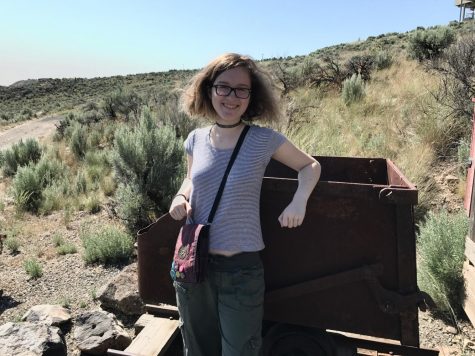San Andreas: It’s the end of the world as we know it
Clarion photo Jacquelyn Johnson
October 29, 2016
The rumbling began deep under California’s Salton Sea, near the infamous San Andreas fault. Over 200 tiny, almost undetectable successions of quakes were recorded in all, starting Sept. 26 and continuing through the night.
But what started small soon grew into a series of full-fledged earthquakes, triggering local officials to issue an earthquake alert. On Sept. 29, in the early hours of the morning, two 4.3 magnitude earthquakes shook surrounding residents, followed by a magnitude 4.1 later that day. It caused a huge scare among local citizens, especially because a San Andreas rupture is overdue by more than 130 years.
Seismologists across the globe agree: the San Andreas fault is on the verge of a huge earthquake. Years of pressure built up make it a serious threat for thousands of Californians, from the redwoods to Los Angeles. And what’s even worse – it could happen any day.
Rumors of unfathomable destruction and dire consequences are spreading like wildfire. But whether or not these rumors are true is up for debate – after all, we can’t really predict the outcomes of this quake. Many people are citing the 2015 blockbuster film “San Andreas” as evidence for the amount of damage an earthquake could cause. Dwayne “The Rock” Johnson steals the screen yet again in this high speed thriller, crammed with gory death scenes and suspense. When the massive San Andreas earthquake hits, nobody is prepared, and thousands meet their death. But one L.A search and rescue pilot named Ray Gaines keeps a cool head through it all, and manages to save the lives of the people who matter most to him.
Whether it’s dodging flying debris, cresting a tsunami wave in a motor boat, or venturing into a collapsed parking structure, there isn’t a dull moment in the film. Hollywood letters topple! The Golden Gate is washed away! Nothing can stop intrepid Ray on his daring mission.
While the film certainly packs the action, most agree it’s anything but accurate. For one, the 9.0 earthquake featured in the movie just isn’t possible. The San Andreas fault isn’t long or deep enough to create a quake of that magnitude. Seismologists predict that the quake will be limited to a 8.0 magnitude, with a 75 percent chance of a 7.0. Though these numbers don’t sound too hopeful, rest assured- they could make all the difference. A 7.0 earthquake releases 1000 times less energy than a 9.0, meaning the damage would be much less severe.
One of the biggest mistakes the movie made was its portrayal of a monster tsunami that hits the San Francisco Bay. Contrary to popular belief, tsunamis don’t occur after every earthquake. The fault has to be underwater for a quake to trigger a tsunami. Since the San Andreas fault doesn’t run under the Pacific Ocean at all, a tsunami would be completely out of the question. And even with a 9.0 earthquake, no tsunami would have the height or power to wipe out the entire bay, including San Francisco and the Golden Gate Bridge.
What’s more, some of the cataclysmic after effects are completely unrealistic. In the movie, the Hoover dam – a 6,600,000 ton hunk of concrete- fails after just a few seconds, exploding in a huge eruption of water. In fact, it takes the L.A. Hollywood sign a longer time to fall over than it takes for the Hoover dam to crack clean in half. Seem a little ridiculous? That’s because it’s a drama stunt dreamt up by Hollywood.
So before you sit back and throw up your hands, remember that there are some seismic cracks in the film. Entire cities decimated and death tolls shattering the million mark are thrilling to watch, but they’re not necessarily in our future. It’s this kind of armageddon-esque destruction that makes “San Andreas” exactly what it is: a disaster-junkie’s daydream.
















